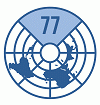Mr. Felicitator,
I have the honour to speak on behalf of the Group of 77 and China on the topic of Area-based management tools, including MPAs. I wish to assure you of our full support in the discussion of this informal working group. At the outset, I would like to thank the Chair of the PrepCom for his indicative list of questions as well as the Chair's overview which are very helpful for our preparation.
Mr. Facilitator,
The area-based management tools, including MPAs, are vital for achieving the objective of the new instrument which is to conserve and sustainably use the marine biological diversity of areas beyond national jurisdiction. While the new instrument will fill the existing gaps, the existing area-based management tools established by the global, regional and sectoral frameworks shall not be undermined.
First, let me touch on the guiding principles and approaches that underpin the areas-based management tools, including MPAs. During the 1st PrepCom, a number of guiding principles and approaches have been advanced. At this stage, we would like to reaffirm that relevant approaches or principles in this context include 1) the protection and preservation of the marine environment, as enshrined in relevant legal instruments; 2) the precautionary approach, as recognized in the existing international instruments. This approach is necessary in this context where there still are knowledge gaps and uncertainty 3) the ecosystem approach, as recognized in relevant international instruments and frameworks as well as in non-binding instrument regarding the sustainable development. This approach is necessary to reach a conservation of marine biodiversity in areas beyond national jurisdiction in an integrated manner; 4) concept of sustainable and equitable use which also relates to the intra- and inter- generational equity and all dimensions of the new instrument; 5) science-based approach which means that all decision making should be based on the best available scientific information; 6) transparency as to encourage public awareness and participation through wide dissemination of information 7) accountability which will be the basis for establishing a system of review and compliance; 8) liability in case that the activities or measures adopted under this new instrument cause damage to marine environment which can be adapted from the principle of polluter-pays.
Mr. Facilitator,
We wish to reiterate our view regarding the need to define area-based management tools taking into consideration various definitions existing in the global and sectoral frameworks. We can adapt those existing definitions in the context of conservation and sustainable use of marine biodiversity of areas beyond national jurisdiction, the tool should be designed and applicable in a specified area located beyond national jurisdiction with a view to achieving a defined objective (environmental conservation or/and resource management). We can also define other notions such as Marine Protected Areas (MPAs), or Marine spatial planning (MSPs) by adapting from the existing definitions.
Mr. Facilitator,
The fundamental objective of the new instrument to conserve and sustainably use marine biodiversity of areas beyond national jurisdiction in an integrated manner can be achieved by the area-based measures aiming at protecting marine ecosystems and avoiding or minimizing adverse impacts on marine biological diversity.
Regarding the criteria for identification of priority areas for area-based management tools including MPAs, under the new instrument, general criteria and guidelines to identify areas to conserve marine biological diversity shall be developed taking into account the existing internationally recognized criteria for area-based conservation measures. We also bear in mind the uniqueness and rarity of the areas, vulnerability, fragility, sensitivity of the area, biological productivity and diversity. Each area has different conservation purposes, hence the different level of stringency of measures.
Regarding the process of designation or establishment of area-based management tool, we are of the view that the new instrument should address different steps of the process: 1) the proposal of management plans, at this stage, we think that the proposal will be submitted by states parties and we have to reflect on to which body it will be submitted. Furthermore, there is a need to define what the minimum required description to be included in the proposal will be, among others, the objective of the measure, the delimitation of the area, the conservation or management measures needed to reach the specified objective; 2) the examination and review of the proposal by a competent body, this process should be inclusive and based on the best scientific knowledge; 3) the adoption of a new MPA by a decision making mechanism in consultation with the relevant technical or scientific bodies; 4) Enhancement of the effectivity of the measures which needs to reflect on compliance, monitoring and review mechanism of the new instrument.
Mr. Facilitator,
Once again, the challenge in implementing this aspect of the new instrument is to find an appropriate institutional arrangement to fulfill mandates and functions relating to the area-based management tools.
Mr. Facilitator,
Last but not least, from the perspective of developing countries, to put in place an area-based management tools, we can foresee that capacity building and financial resources are required. We would like to stress that the process should not be cumbersome for developing states, especially Small Island developing states.
Thank you.
